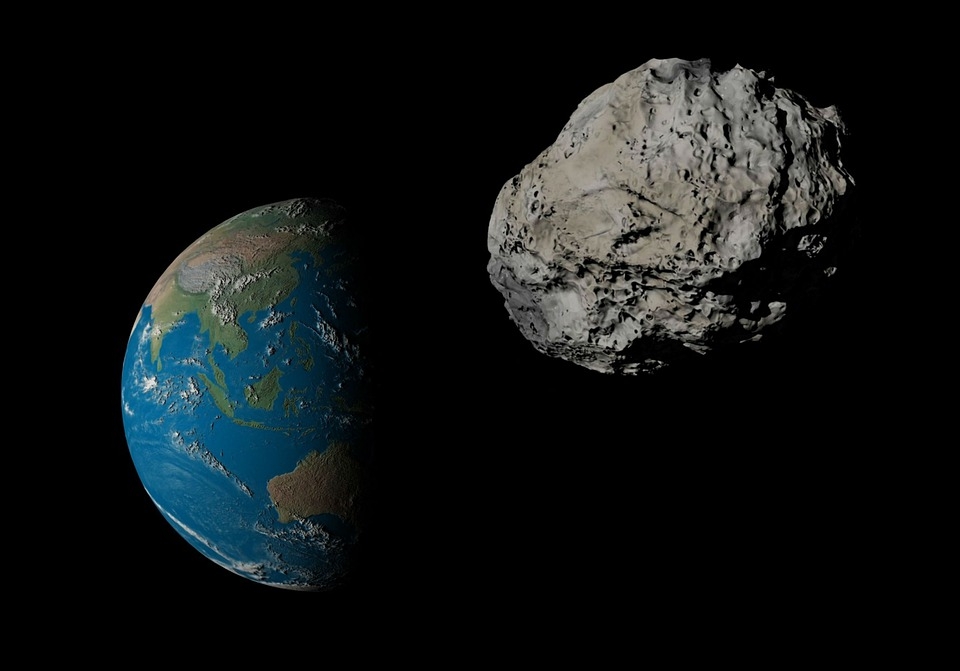The chances of an asteroid actually colliding with Earth are very small, especially if the asteroid in question is classified as potentially hazardous. Recently, NASA has warned that an asteroid might be colliding with Earth and is expected to arrive in November.
Express reports the agency’s Center for Near-Earth Object Studies has marked one particular asteroid, referred to as 2018 VP1, as headed Earthbound with its expected arrival date being November 2, the day before the US Elections. NASA predicts that VP1 would approach Earth within 4,700 feet and has a 0.41 percent chance of actually crashing into Earth. However, they noted that a direct impact from VP1 is unlikely, with a one in 240 chance,
It should be noted that asteroid 2018 VP1 is also a very small asteroid, measuring 6.5 feet in diameter. Thus, it is not considered to be potentially hazardous and would likely burn and break up when it reaches the atmosphere, turning into a meteor passing through the skies.
Asteroids that are still on the smaller side but are bigger than VP1 may still pass through the atmosphere but will only inflict damage to the local area it impacts. However, massive asteroids, like the rock that triggered the mass extinction of the dinosaurs millions of years ago, would set off a global disaster should it crash into Earth. Should an asteroid like this crash into Earth, it would more likely hit water rather than land.
Previously, asteroid 2020 QG passed by Earth at a record closeness, having approached the planet much closer than its distance with the Moon and its approach took astronomers by surprise as it passed by without being noticed. Since its fly-by, NASA has revealed that QG’s trajectory has permanently changed by 45 degrees, shifting its course due to the Earth’s gravitational pull.
“It’s really cool to see a small asteroid come by this close because we can see the Earth’s gravity dramatically bend its trajectory. Our calculations show that this asteroid got turned 45 degrees or so as it swung by our planet,” said Paul Chodas of the agency’s Jet Propulsion Laboratory.



 Why now is the time to address humanity’s impact on the moon
Why now is the time to address humanity’s impact on the moon  Synthetic human embryos let researchers study early development while sidestepping ethical and logistical hurdles
Synthetic human embryos let researchers study early development while sidestepping ethical and logistical hurdles  The mystery of consciousness shows there may be a limit to what science alone can achieve
The mystery of consciousness shows there may be a limit to what science alone can achieve  Six space missions to look forward to in 2024
Six space missions to look forward to in 2024  Alpha, beta, theta: what are brain states and brain waves? And can we control them?
Alpha, beta, theta: what are brain states and brain waves? And can we control them?  Customizing mRNA is easy, and that's what makes it the next frontier for personalized medicine − a molecular biologist explains
Customizing mRNA is easy, and that's what makes it the next frontier for personalized medicine − a molecular biologist explains  The rising flood of space junk is a risk to us on Earth – and governments are on the hook
The rising flood of space junk is a risk to us on Earth – and governments are on the hook  If life exists on Jupiter’s moon Europa, scientists might soon be able to detect it
If life exists on Jupiter’s moon Europa, scientists might soon be able to detect it  Why is the universe ripping itself apart? A new study of exploding stars shows dark energy may be more complicated than we thought
Why is the universe ripping itself apart? A new study of exploding stars shows dark energy may be more complicated than we thought  The brightest object in the universe is a black hole that eats a star a day
The brightest object in the universe is a black hole that eats a star a day  The brain is the most complicated object in the universe. This is the story of scientists’ quest to decode it – and read people’s minds
The brain is the most complicated object in the universe. This is the story of scientists’ quest to decode it – and read people’s minds  Tatahouine: 'Star Wars meteorite' sheds light on the early Solar System
Tatahouine: 'Star Wars meteorite' sheds light on the early Solar System  Larger and more frequent solar storms will make for potential disruptions and spectacular auroras on Earth
Larger and more frequent solar storms will make for potential disruptions and spectacular auroras on Earth 






























